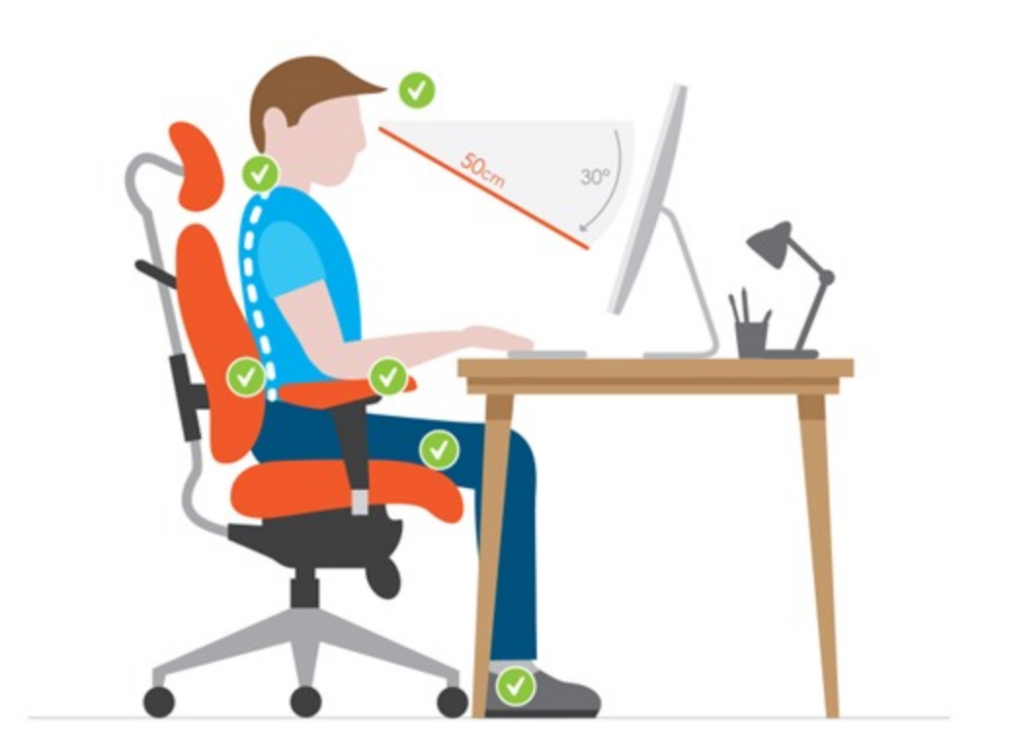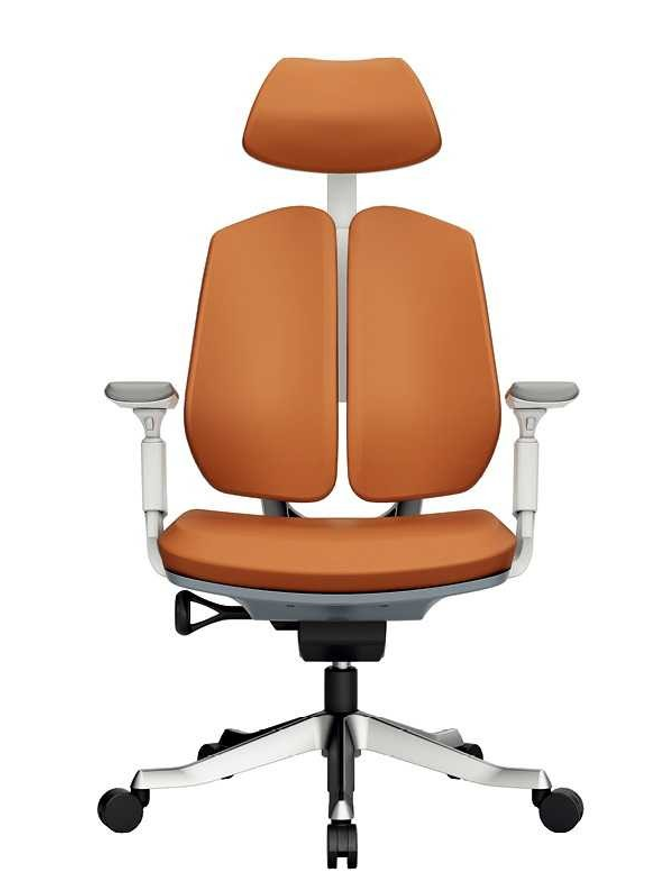Sitting down causes a number of stresses in our bodies, especially our spines, and this
has recently begun to be more recognised by health professionals and is the main
reason for the sudden boom of ergonomic office chairs.
What does the term ‘Ergonomic’ mean?
Ergonomics is a science, also known as human engineering or biotechnology. The
discipline involves looking at how objects can be designed and/or arranged to best
compliment easy and safe human interaction.
An ergonomic chair, for example, is a chair that has been designed to best support the
human body, including considerations like posture, comfort, support and health.
What makes a chair ‘Ergonomic’?

●Keep an arm’s length away from your computer screen. Ideally, the top of the
monitor should be level with your eyes.
●Sit up straight and avoid slouching. Your neck should be in a relaxed and
neutral position.
●Keep your arms parallel to the floor
●Sit with both feet flat on the floor, and avoid crossing your legs. This is to
allow correct blood circulation within your legs.
A good ergonomic chair will be adjustable, to allow for better control and customised
settings. Adjustability is especially important if you are buying chairs that will be used by
different users. If you are buying a chair for your home office, or for one person
specifically, consider using their body dimensions for a greater ‘fit’.
Ergonomic chair features

1. Seat height
The optimal seat height should allow you to place your feet flat on the floor, which is
why choosing a chair with an adjustable seat height is essential because everyone is
different. What’s more, with most work desks remaining at a fixed height, it is important
that the seat height can be altered. A seat height that ranges from 16 to 21 inches off
the floor should work for most people.
2. Seat width and depth
Proper seat depth should leave between 2 and 4 inches between the edge of the seat
and the back of your knees. If the seat is too far forward, it may put undue pressure at
the back of the knees.
3. Seat tilt
Good ergonomic chairs will allow the seat to tilt, which allows for correct positioning of
the pelvis. Anterior pelvic tilt is a posture problem that affects almost everyone who sits
a lot, which is why it’s important to keep the pelvis in a neutral position when sitting,
with 80-degree angles at the hips, knees and ankles.
4. Backrest Lumbar support
This refers to the support given to your lower back and is an essential feature of an
ergonomic chair. Ergonomic chairs support the natural ‘S’ shape of the spine, which
prevents slumping and reduces stress on the spine and the pelvis. An adjustable
backrest allows users to align the curve in the chair with the curve in their spine, for
optimal support.
5. Backrest recline
An adjustable backrest allows for greater tailored positioning for the user, as they can
move the backrest to more specifically support their natural spine position. Using this
feature throughout the day allows the backrest to take some of the weight from your
upper body, reducing the pressure on your spinal disks and muscles.
6. Swivel
The swivel in an ergonomic chair helps users with their manoeuvrability, making it easier
to reach different points of their desks without having to strain excessively.
7. Armrests
Armrests help to reduce tension in the upper body and allow the shoulders to relax.
However, armrests should not be used when typing as this reduces overall arm
movement, which in turn increases wrist movement leading to strain on the forearm
muscles.
8. Headrest
Supports the back of the head and the upper neck, reducing tension in the shoulders
and upper torso.
9. Materials
A good ergonomic chair is made out of comfortable materials. The material should not
cause the user’s back to sweat. However, the materials used will depend on the budget;
high-end ergonomic chairs will use leather or velvet.
10. Wheels
If your chair will be used on a hard surface, find a chair with soft rubber wheels. If your
workplace/home office is carpeted, opt for hard wheels to help you navigate better.


